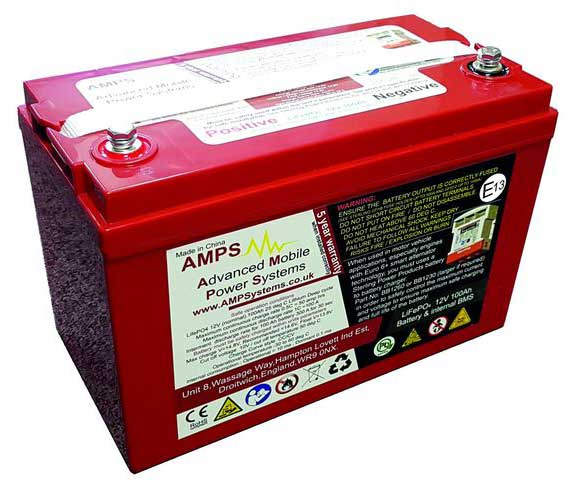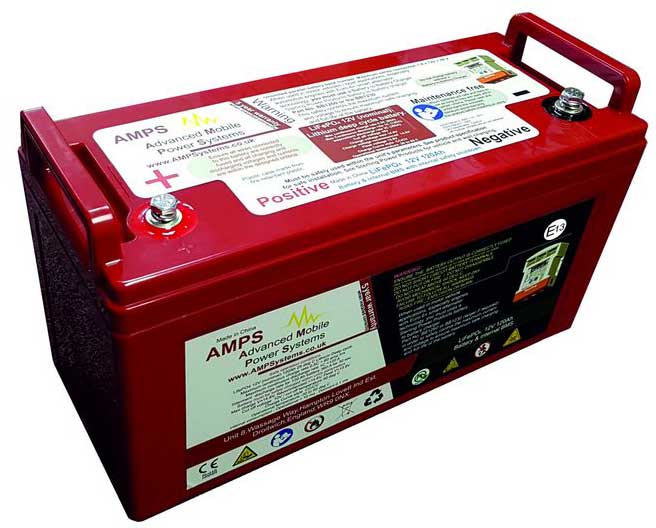Lithium battery with built-in BMS and E-label
In addition to our range of lithium batteries, we introduce the AMPS LiFePO4 series on 12V with a capacity of 100Ah or 120Ah. The batteries can be connected in series/parallel to 48V and they are approved for automotive applications (E-label). We recommend using a "Battery-to-Battery" charger to charge the batteries correctly and safely through the alternator (EURO6).
The advantages of lithium batteries are well known over conventional batteries.
They are superior on every level - everyone wants them, however, installing them on vehicles/boats, up to now, was not that simple and required a lot of knowledge because of fears of expensive damage as lithium has a very specific envelope for their charging and discharging curves.
For many years people have wanted a simple / easy solution to installing lithium batteries in the automotive industry. This includes: commercial vehicles, campervans, caravans, military, police and ambulances.
However, due to the specific incompatibility with charging voltages and currents on board the vehicles (exacerbated by the new Euro 6+ vehicle’s engines with smart alternator technology) and the requirements of the battery. The two things simply could not safely be brought together without a very elaborate intermediary system linked into a BMS for the lithium battery. All these fears are now overcome; today we have lithium batteries with built in BMS and automatic shutdown systems that take care of the cell safety and extreme faults that may be presented to a lithium battery. With the simple addition of a Battery to Battery charger the correct voltage and current profile is provided to the battery from the vehicle's alternator with no integration fuss. This means, when your alternator voltage is low, the battery to battery charger increases the voltage and when your alternator's voltage is too high the battery to battery charger decreases it.
Also, when you have too much current, the battery to battery charger reduces the current, thus, presenting the lithium battery with its ideal safe voltage and current requirements. This has never been so important than with the modern Euro 5/6 vehicle applications.
More info in this datasheet and on smartenergyshop.be.


